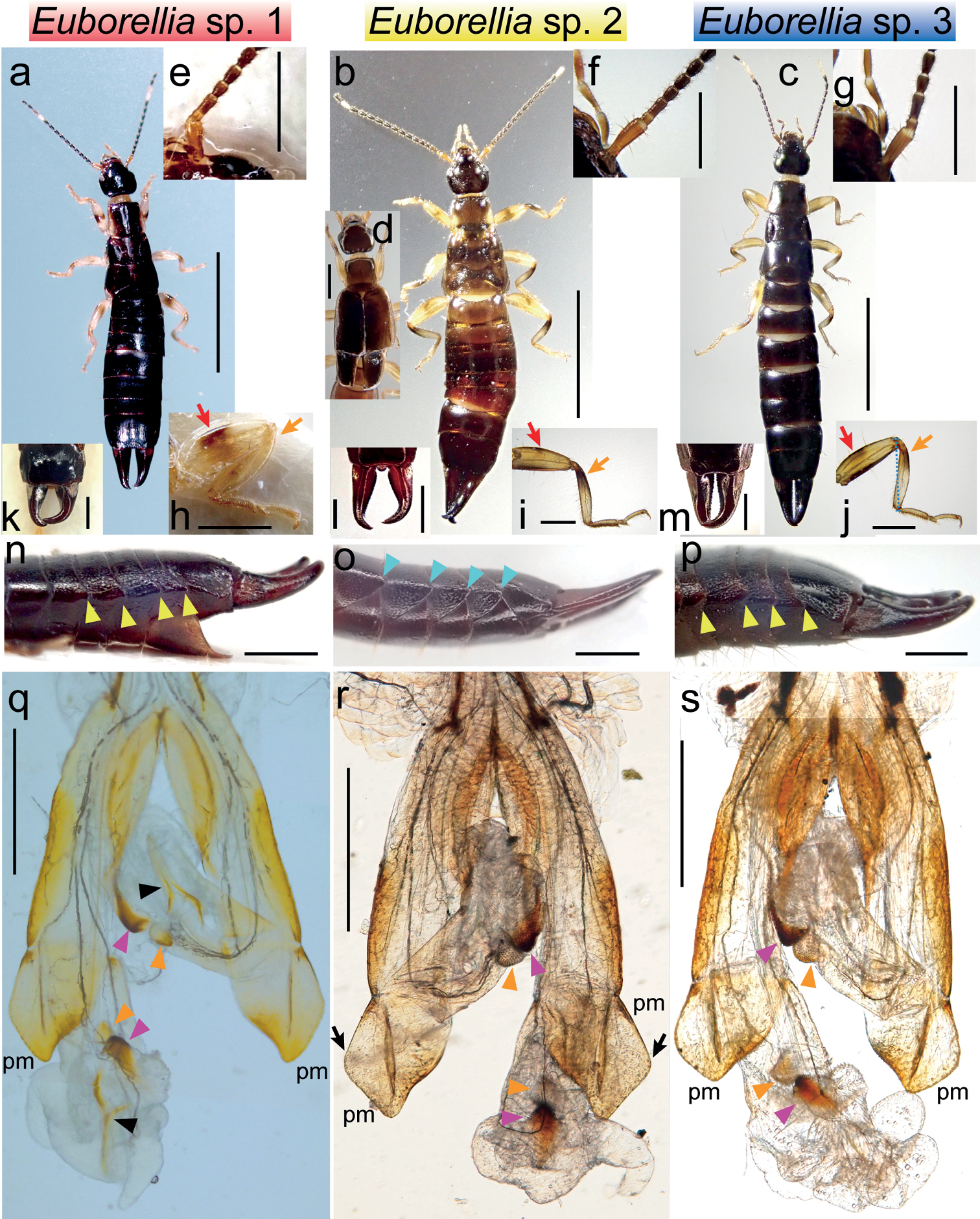
|
||
|
Female habitus (a–c), head and thorax of a fully winged-form male (d), base of female right antenna (e–g), female right hindleg (h–j), male forceps (k–m), left side of male post-abdomen (n–p), and distal part of male genitalia (q–s) of Euborellia sp. 1 (identified as E. annulata; a, e, h, k, n, q), Euborellia sp. 2 (identified as E. philippinensis; b, d, f, i, l, o, r), and Euborellia sp. 3 (identified as E. pallipes; c, g, j, m, p, s). Femoral and tibial black marking are indicated by the red and orange arrows, respectively (h–j). Carination and dorso-lateral angles of the abdominal tergites, the latter forms the lateral ridges, are indicated by the yellow and light blue arrowheads, respectively (n–p). On each penis lobe, a pair of denticulated pads (the orange and magenta arrowheads) and a Y-shaped area of pigmentation (only in Euborellia sp. 1: black arrowheads) are present. The external apical angle of the parameres (pm) is acute in Euborellia sp. 2 (the black arrow). Scale bars: 5 mm (a–c); 1 mm (d–p); 500 µm (q–s). |